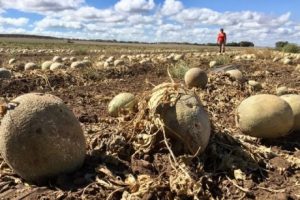I don’t blame any regulatory type for going early or going late in a foodborne disease outbreak.
 There’s lots of armchair quarterbacks out there, and we’ve tried to present the various viewpoints on many an outbreak.
There’s lots of armchair quarterbacks out there, and we’ve tried to present the various viewpoints on many an outbreak.
There’s also a lot people out there with nothing but a personal agenda, based on profit rather than peer review.
Christine Haughney of Politico reports that people had been getting sick from eating I.M. Healthy Original Creamy SoyNut Butter for more than two months when Peter Ebb, a 59-year-old Boston lawyer and health enthusiast, went for a run and then ate his usual gluten-free English muffin smeared with soy nut butter.
Later that morning — March 6, 2017 — Ebb saw a message from Amazon, which had sold him the nut butter, that the manufacturer had recalled it for contamination by E. coli bacteria. Ebb threw away a protein drink he had made with the soy nut butter, but didn’t worry too much. The Food and Drug Administration warning that was linked to the email was worded very cautiously: Though serious illnesses might result, even potentially leading to death, “most healthy adults can recover completely within a week.”
Six days later, Ebb was hospitalized and developed a deadly type of kidney failure. Within days, doctors told his wife to send for their children in case they needed to bid him a last goodbye. He survived, but remains unable to work full time and has trouble climbing the stairs. Now, he’s joining with 18 other victims to file claims against the companies responsible and call attention to the inadequacy of the nation’s recall system.
 “If I had heard about the problem even one week earlier and stopped then, I might have been able to avoid the disease completely, and life today would be very different,” Ebb said.
“If I had heard about the problem even one week earlier and stopped then, I might have been able to avoid the disease completely, and life today would be very different,” Ebb said.
A POLITICO investigation found that the I.M. Healthy SoyNut Butter case — which officials at the FDA and the Centers for Disease Control and Prevention have hailed as an improvement over past failures — was nonetheless emblematic of persistent weaknesses in the nation’s food-safety system, some of which haven’t been corrected for two years after being flagged by the agency’s inspector general.
Two months elapsed between the first person sickened by eating I.M. Healthy SoyNut Butter on Jan. 4 and the recall orders that began on March 3 and expanded three more times until March 10. The FDA, working through a national network of labs that identifies outbreaks, pinpointed the contamination on Feb. 22. The nine-day lag time in persuading the manufacturer to begin recalling the tainted products was a significant improvement over previous lag times — which were as high as 165 days in one infamous case, according to the inspector general. But victims maintain that the FDA should have ordered a recall on its own authority, given that a few days or even hours can make a difference in a deadly outbreak.
Going public: Early disclosure of food risks for the benefit of public health
Mar.17
NEHA, Volume 79.7, Pages 8-14
Benjamin Chapman, Maria Sol Erdozaim, Douglas Powell
http://www.neha.org/node/58904
Often during an outbreak of foodborne illness, there are health officials who have data indicating that there is a risk prior to notifying the public. During the lag period between the first public health signal and some release of public information, there are decision makers who are weighing evidence with the impacts of going public. Multiple agencies and analysts have lamented that there is not a common playbook or decision tree for how public health agencies determine what information to release and when. Regularly, health authorities suggest that how and when public information is released is evaluated on a case-by-case basis without sharing the steps and criteria used to make decisions. Information provision on its own is not enough. Risk communication, to be effective and grounded in behavior theory, should provide control measure options for risk management decisions. There is no indication in the literature that consumers benefit from paternalistic protection decisions to guard against information overload. A review of the risk communication literature related to outbreaks, as well as case studies of actual incidents, are explored and a blueprint for health authorities to follow is provided.












